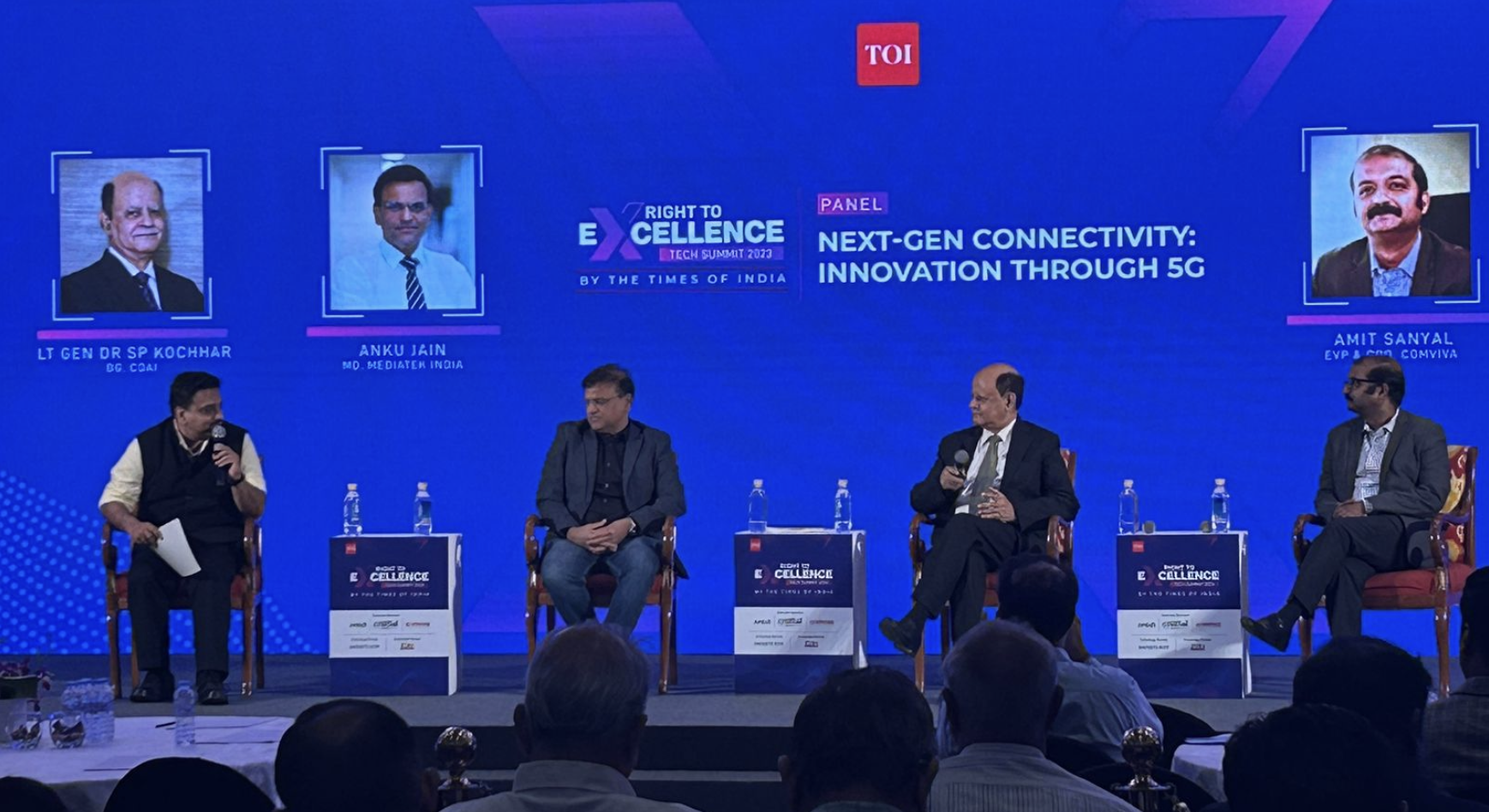
[ad_1]
The Times of India held “Right To Excellence – Tech Summit 2023” in New Delhi on September 22. The engaging event saw industry leaders provide valuable insights into the transformative power of technology across various industries. Rajeev Chandrasekhar, minister of state for electronics and information technology, gave the keynote address. One of the sessions at the event was ‘Next-gen Connectivity: Innovation Through 5G’. The panelists comprised Lt Gen Dr SP Kochhar, Director General, COAI; Anku Jain, Managing Director, MediaTek India; and Amit Sanyal EVP and COO, Comviva.
Mediatek’s Jain spoke about the key features of 5G, such as its ultra-fast speeds, low latency, and can support a massive number of devices connected to the network at the same time. He explained how these features are enabling new and innovative apps. He also discussed the use cases of 5G and monetisation opportunities. These include remote healthcare services, conduct remote surgeries and AR/VR technologies that are being used to enhance and personalise customer experiences. “Generative AI too will need high connectivity and bandwidth,” Jain said.
Dr Kochhar said that it’s time telecom companies stop looking for a killer app to monetise 5G. He said that there is no one killer app, companies have to look for small apps that can be monetised and used for revenue generation. Kochhar emphasised the need for government support for the telecom industry. “Industry has not yet made money out of 5G. Telecom industry is overburdened. Industry is not able to build the infrastructure required for 5G. Government and partner industries have to support.” Kochhar also said that development for 6G is already here. It’s time telecom companies start planning for them.
Sanyal said that he sees huge potential of 5G monetisation in the enterprise space. “Biggest monetisation of 5G is in enterprise apps. Sliced network can be one area. AR/VR apps for companies to enhance customer experience is another.”
In all, panellists agreed that 5G is a transformative technology that has the potential to revolutionise many industries. The discussion highlighted the fact that 5G is still in its early stages of deployment, but it is already being used to develop new and innovative applications. They agreed on the challenges that need to be addressed in order to achieve the full potential of 5G, such as the need for investment in infrastructure, the need to develop new skills and expertise, and the need to address regulatory challenges.
Mediatek’s Jain spoke about the key features of 5G, such as its ultra-fast speeds, low latency, and can support a massive number of devices connected to the network at the same time. He explained how these features are enabling new and innovative apps. He also discussed the use cases of 5G and monetisation opportunities. These include remote healthcare services, conduct remote surgeries and AR/VR technologies that are being used to enhance and personalise customer experiences. “Generative AI too will need high connectivity and bandwidth,” Jain said.
Dr Kochhar said that it’s time telecom companies stop looking for a killer app to monetise 5G. He said that there is no one killer app, companies have to look for small apps that can be monetised and used for revenue generation. Kochhar emphasised the need for government support for the telecom industry. “Industry has not yet made money out of 5G. Telecom industry is overburdened. Industry is not able to build the infrastructure required for 5G. Government and partner industries have to support.” Kochhar also said that development for 6G is already here. It’s time telecom companies start planning for them.
Sanyal said that he sees huge potential of 5G monetisation in the enterprise space. “Biggest monetisation of 5G is in enterprise apps. Sliced network can be one area. AR/VR apps for companies to enhance customer experience is another.”
In all, panellists agreed that 5G is a transformative technology that has the potential to revolutionise many industries. The discussion highlighted the fact that 5G is still in its early stages of deployment, but it is already being used to develop new and innovative applications. They agreed on the challenges that need to be addressed in order to achieve the full potential of 5G, such as the need for investment in infrastructure, the need to develop new skills and expertise, and the need to address regulatory challenges.
[ad_2]
Source link
